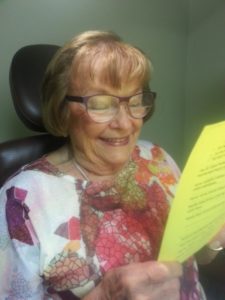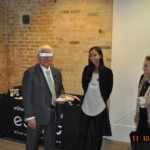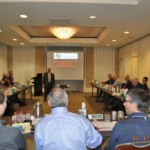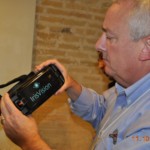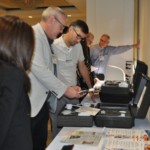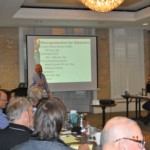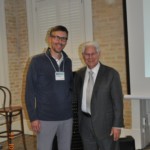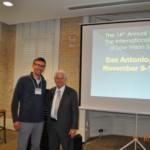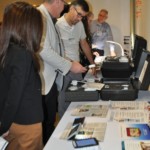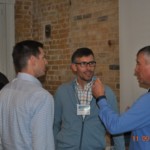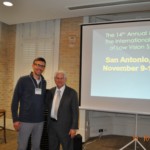Due to eye complications from juvenile rheumatoid arthritis, Sophie needed cataract surgery but was unable to have implants. The condition on not having a natural lens is called aphakia and it requires a patient to have strong glasses or contact lenses. Take a look at Sophie’s reaction to receiving new glasses with high-tech, super-modular lenses and her reaction to having comfortable soft contact lenses.
Category: Uncategorized
Prescribing Special Glasses for Low Vision Patients
Hello, Dr. Long here sharing three low vision patient cases.
First we have Bobby who is partially-sighted secondary to trauma and ocular histoplasmosis and he is updating his bioptic driver’s licensure.
Second is De’Vante who has optic neuropathy and sees 20/120 with each eye. He wants to become a bioptic driver, be able to read, recognize faces, see fast food menus, and many other things.
Finally, Lonnie has diabetic retinopathy and neovascular glaucoma and I explain more about his condition and goals in the final segment of the video.
“Ugly” glasses and a quick tour of a mobile low vision examination room.
Here, in this two minute video, we feature three patients receiving their glasses and a tour of Dr. Long’s current office in Clarksville, Indiana.
The first gentlemen you see has seen Dr. Long for low vision care for many years now. He has not needed telescopic glasses until now and seems to be pretty excited about the help the bioptic style will afford him.
The second patient has fixed, dilated pupils and is extremely sensitive to light. Additionally, he is legally blind and needs both the tint and the magnification that comes with his prescription bioptic glasses and reading telescopic glasses.
Finally, the end of the video features a patient who was seen being evaluated in a previous video who is now picking up her Side Vision Awareness Glasses and being trained by our low vision technician, Casey.
Enjoy!
FOLLOW-UP from our last post: Side Vision Awareness Glasses Video!
Since our last post about helping patients with one-sided peripheral vision loss due to stroke, Dr. Long has prescribed several pairs of Side Vision Awareness Glasses. Additionally, there is a new related product, the Full Field Side Vision Awareness Glasses system that Dr. Long has successfully prescribed now as well. Take a look at the video to learn about both!
New Product to Help People with Stroke or Brain Related Injuries
What are Side Vision Awareness Glasses (SVAG)?
Side Vision Awareness Glasses® (SVAG) were developed by Dr. Errol Rummel of Jackson, NJ, after years of treating people with stroke-related,or brain injury related hemianopsia (side vision loss).
Hemianopsia (loss of half the width of your field of vision) is one of the most common side effects of a stroke or traumatic brain injury. People can find themselves afraid to go out, disoriented, and struggling to make it through their day.

Benefits of Side Vision Awareness Glasses (SVAG)
1. A wide viewing area, allowing better field awareness. And because SVAG have a vertical edge, a patient just needs to move their eyes a couple of millimeters to get into the SVAG area of the lens.
2. Cosmetically more attractive because the front of the lens is smooth, making the area with prism barely noticeable.
3. A higher index of refraction, so SVAG is a thinner, lighter, and more comfortable than other types of hemianopsia glasses.
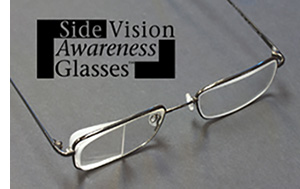
New Design Exclusive to Midwest Low Vision
Typically, these glasses have a prism on the back of the lens so that someone can use it when they need to by shifting their eyes to the left or the right. However, Dr. Rummel generously gifted Dr. Jarrod Long a set of his brand new full-field side vision awareness glasses. The work similarly to the standard SVAG but the entire lens is specially designed to shift the missing part of your vision into view. This expands a person’s awareness of objects in their path and enhances peripheral vision. Currently, Midwest Low Vision is one of the only practices in the Midwest with the full field SVAG.
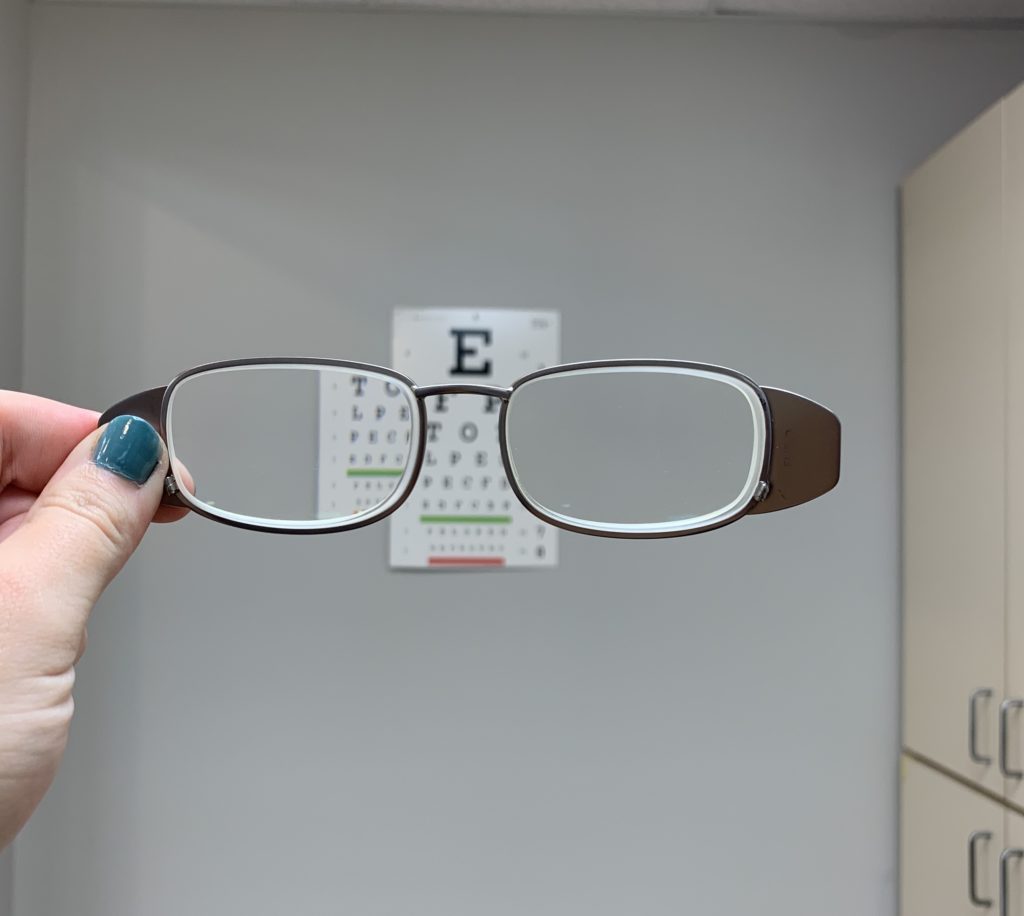
This is a pair of the new full-field glasses. Notice how there is no extra attachment on either lens- instead, the entire lens is designed to adjust the field of view. You can see how the lens shifts the image of the eye chart to the left. This specific type of lens is ideal for someone missing their right visual field. The new design allows someone to see more of their side vision without compromising the view right in front of them.
Dr. Long is specially trained to prescribe and dispense the right pair of glasses for you or your loved ones. If this sounds like something that would improve your quality of life, please call for more information!
Usually it’s just the ladies, but I was happy to get a big hug from a nice gentleman this afternoon!
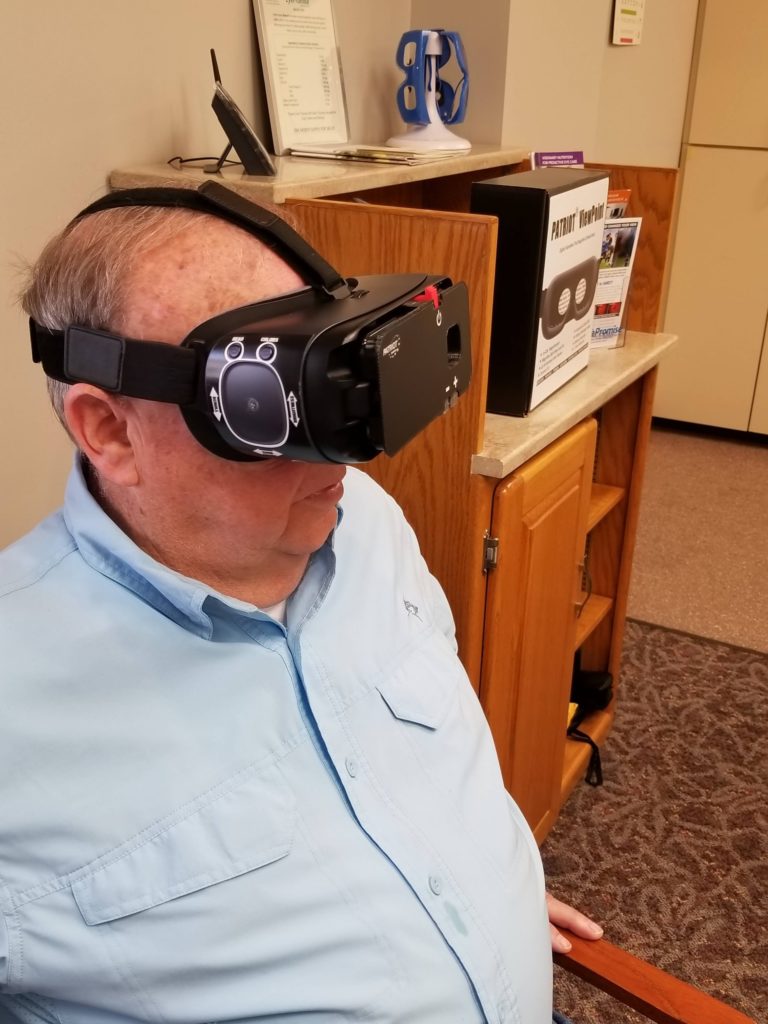
As a low vision specialist, I like to find the simplest solutions to meet my patient’s goals. Sometimes it only takes a new, stronger pair of conventional glasses. Most of the time, however, it takes specialized telescopic, bioptic, microscopic, tinted, prismatic, and other styles of glasses.
Occasionally, none of these things work. More magnification than what optics will allow is needed. Enter “wearables” — magnification and vision enhancement technology that can be worn similarly to glasses. I have had the opportunity to try, and research, several of these emerging technological wonders. And trust me, there are many options out there with more being introduced regularly. They are all amazing!
It’s not new technology necessarily. It’s just that it has now become practical and realistically usable on a daily basis for multiple tasks on my patients’ “wish lists.” They are less cumbersome, more reliable, and more easily updated as software changes become available.
Casey, my head low vision technician, did all of the training today, but I was lucky enough to get the teary-eyed hug before he walked out the door. I have a feeling that won’t be the last hug from a patient whose vision is worse than 20/1000!
Dear Eye Care (or other) Provider,
Do you know or have you ever seen, a friend, patient, client, loved one or other who is unable to see to do something they want to be able to do? Take a look here at my article written for Optometric Management that explains when to make the referral. You could change YOUR patient’s life…and I WILL refer them back to you for the specialized care that you provide.
Here’s what Dwain had to say: “In dealing with the loss of most of my vision, I never thought I would ever be able to attend live sporting events again. With the help of Dr. Long and his great staff (Casey especially) I was able to enjoy one of my favorite pastimes.”
Happy Valentine’s Day from Midwest Low Vision!

Age, weather, level of vision, and other things to be mindful of…
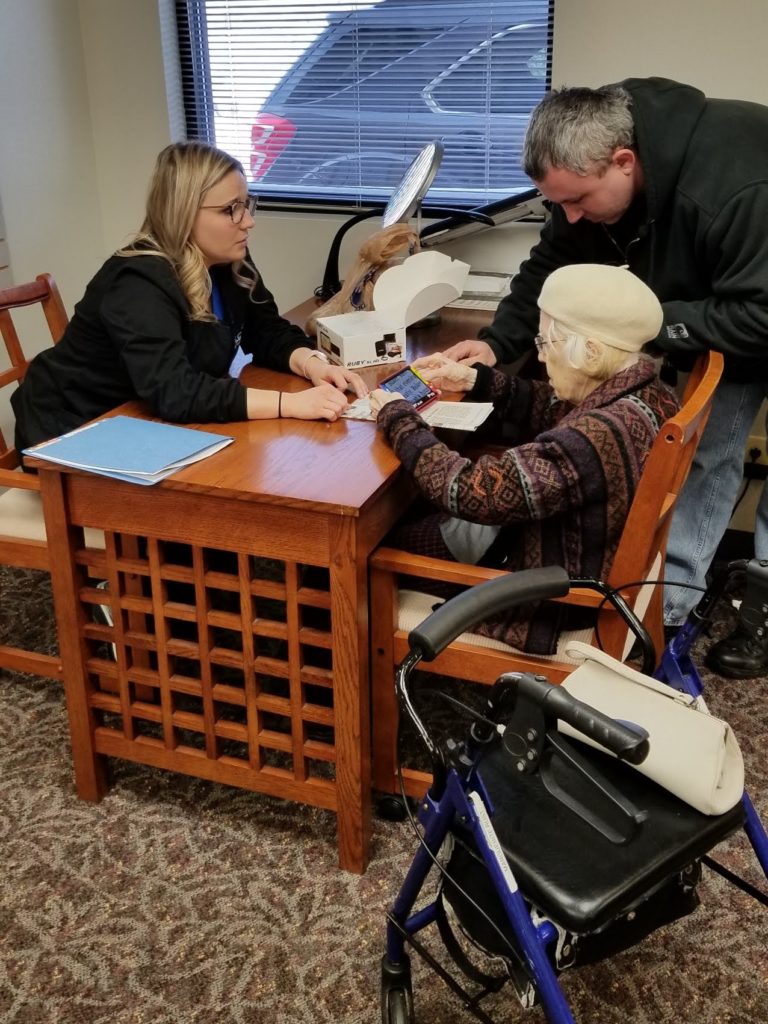
It’s -9 degrees Fahrenheit (never mind the wind chill) and my sweet 107 year old patient had no problem beating me to the office this morning for low vision care
Often times when I speak with with family and caregivers of my potential patients I hear things like “but mom is 83 years old”. Or, “dad won’t want to make a trip that far to see you”. They often say “her vision is really, really poor,” or “he can’t spend that money,” or “[fill in the box].”
One of my roles as a low vision specialist is to see through all of that. I approach each case without bias or discrimination to get down to what really matters. My goal is to help my patients, or potential patients, understand that there is hope and possibility. No matter the circumstances, there may be a way that they can see to do what they want to be able to do!
I have patients of all ages from around the world. Some have levels of vision from 20/20 while others are well-beyond the “big E” on the eye chart. Simple magnifiers and special, custom tints can make big differences. So can more complex solutions like telescopic glasses with focusing caps or video/electronic devices.
Simply make the call to our office. I will talk with you directly to get specific, helpful information and see if it makes sense to schedule an appointment. It almost always does! We will go over important details such as costs, location, and what to bring to the appointment.
I look forward to hearing from you.
Thank you, Dr. Long.
National Low Vision Meeting Summary
As one of the earliest members of the IALVS, Dr. Long attended his 7th annual meeting recently. Click here for a summary of speakers, topics, vendors, and other happenings at this exciting meeting!
What is different about a low vision exam?
In this video Dr. Long explains what you can expect during a low vision evaluation and what makes it different from other eye health examinations. As you’ll see, the key difference is eye health versus functional vision.
During the low vision exam Dr. Long will help you formulate your “wish list” so there are specific goals to be addressed during the approximately hour-long appointment.
Take a look at this short video to learn more about what to expect and just why you might need more than one eye doctor!
